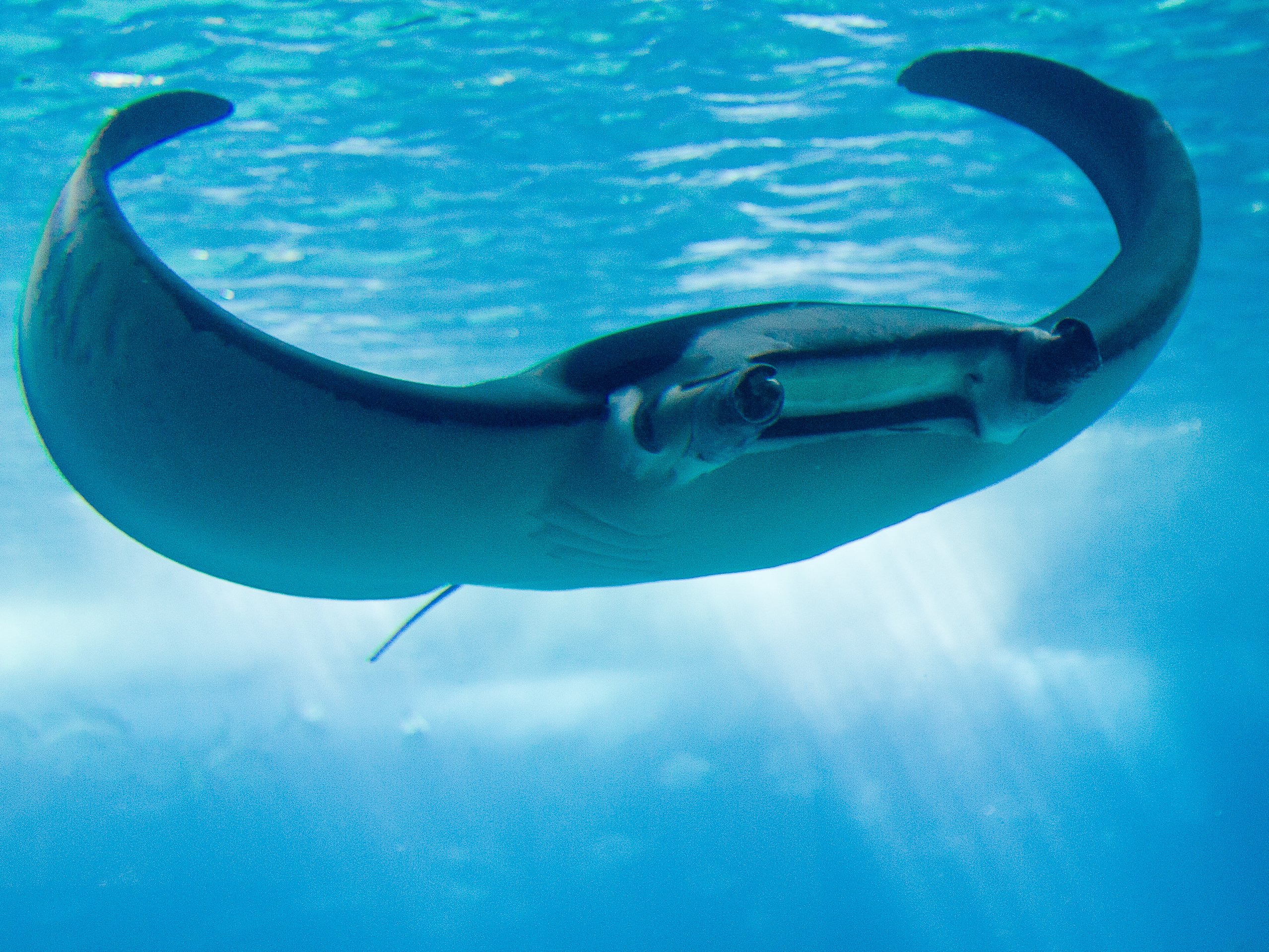10 Fun Facts About Saltwater Fish You Didn’t Know
The ocean, covering more than 70% of our planet’s surface, houses some of the most fascinating creatures on Earth. Among these, saltwater fish display remarkable adaptations, behaviors, and characteristics that often go unnoticed by the casual observer. While we might be familiar with colorful reef fish from finding Nemo or fearsome sharks from documentaries, the underwater world holds countless surprising secrets. From fish that change their gender to those that use tools, the following ten facts reveal just how extraordinary saltwater fish truly are. Prepare to dive into a world of wonder as we explore these amazing aquatic animals and their remarkable lives beneath the waves.
Some Fish Can Change Their Gender

Many saltwater fish species possess the remarkable ability to change their sex during their lifetime, a phenomenon known as sequential hermaphroditism. Clownfish, made famous by the movie “Finding Nemo,” are born male and can transform into females when the dominant female of their group dies. In contrast, many wrasses and parrotfish begin life as females and later change to males, a process called protogynous hermaphroditism. These sex changes aren’t merely superficial—they involve complete reproductive transformations, allowing the fish to produce either eggs or sperm depending on their current gender. This adaptive strategy helps maximize reproductive success in various social and environmental conditions, representing one of nature’s most fascinating biological capabilities.
Parrotfish Create Sandy Beaches

The pristine white sand beaches we love to visit owe their existence partly to parrotfish, colorful reef dwellers with powerful beaks. These unique fish feed on algae growing on coral reefs, scraping it off with their strong beak-like mouths and inadvertently consuming the coral’s calcium carbonate skeleton in the process. Their digestive systems cannot break down this mineral, so they excrete it as fine white sand—a single parrotfish can produce up to 700 pounds of sand annually. Multiply this by thousands of parrotfish across reef ecosystems, and you begin to understand their significant contribution to beach formation over time. This remarkable ecological service highlights the interconnectedness of marine ecosystems and terrestrial landscapes we often take for granted.
Some Fish Use Tools

For decades, tool use was considered a behavior exclusive to mammals, particularly primates, but research has revealed that certain saltwater fish species possess this impressive cognitive ability. The tuskfish, for instance, has been observed carrying clams to specific coral anvils and repeatedly throwing them against the hard surface to crack them open. Orange-dotted tuskfish even use rocks to smash open shellfish, demonstrating problem-solving skills previously thought beyond their capabilities. Wrasses have been documented using rocks as anvils to break open sea urchins, showing planned, multi-step problem-solving. These discoveries have revolutionized our understanding of fish intelligence and forced scientists to reconsider the cognitive capabilities of these animals, whom we often underestimate.
Seahorses Are Fish With Remarkable Reproduction

Despite their unusual appearance, seahorses are indeed true fish, complete with gills, a swim bladder, and fins—albeit with some extraordinary adaptations. What truly sets seahorses apart is their unique reproductive strategy, which reverses traditional gender roles found throughout the animal kingdom. After an elaborate courtship dance that can last for days, the female deposits her eggs into the male’s specialized brood pouch, where he fertilizes them. The male then carries the developing embryos for 2-4 weeks, experiencing contractions similar to mammalian labor when releasing the fully-formed baby seahorses into the water. This remarkable male pregnancy is extremely rare in the animal kingdom and represents one of nature’s most fascinating reproductive adaptations, making seahorses among the most devoted fathers in the underwater world.
Manta Rays Are Self-Aware

Recent research has revealed that manta rays possess a level of self-awareness previously thought limited to more advanced mammals. When placed in front of mirrors, mantas demonstrate behaviors suggesting they recognize their reflection as themselves rather than another ray—a critical test of self-awareness that most animals fail. These graceful giants have brain-to-body ratios comparable to some mammals and boast enlarged brain regions associated with learning, problem-solving, and possibly even emotional processing. Scientists have observed mantas engaging in complex social interactions, demonstrating individual preferences for certain companions, and showing curiosity toward human divers. These cognitive abilities challenge our preconceptions about fish intelligence and suggest that manta rays may experience the world in ways much more similar to our own than we previously imagined.
Some Fish Glow in the Dark

The ocean’s depths harbor a spectacular light show invisible to most humans, as approximately 90% of deep-sea marine creatures possess the ability to produce their own light through a process called bioluminescence. The anglerfish famously uses a glowing lure containing bioluminescent bacteria to attract prey in the pitch-black waters of the deep ocean. Many deep-sea fish have evolved specialized light-producing organs called photophores that they use not just for hunting but also for communication, attracting mates, and confusing predators. Some species, like the flashlight fish, maintain symbiotic relationships with bioluminescent bacteria housed in special organs beneath their eyes, allowing them to essentially switch their lights on and off by covering or exposing these organs. This natural phenomenon has inspired numerous technological innovations and continues to fascinate scientists studying the mysterious adaptations of deep-sea life.
Triggerfish Are Surprisingly Intelligent

Triggerfish have earned a reputation among marine biologists as the “tool experts” of the reef world due to their remarkable problem-solving abilities. These colorful fish have been observed using jets of water to flip over sea urchins, exposing their more vulnerable undersides for easier feeding—a technique that requires both planning and precision. Aquarium studies have demonstrated that triggerfish can learn and remember complex tasks, recognize human faces, and even distinguish between different people who feed them. Perhaps most impressively, they’ve been documented working cooperatively to extract food from experimental apparatus, showing a sophisticated level of social coordination. Their large, forward-facing eyes enable excellent depth perception, while their relatively large brains support cognitive abilities that rival many terrestrial vertebrates, making them among the most intelligent fish in the ocean.
Pufferfish Create Underwater Art

Male pufferfish of the Torquigener species create one of the ocean’s most spectacular and mysterious artworks—intricate circular patterns on the seafloor that were only scientifically documented in the 1990s. These elaborate underwater “crop circles,” spanning up to seven feet in diameter, are meticulously constructed by a single small fish working tirelessly for 7-9 days, using only his fins to carve precise geometric designs in the sand. The purpose of these structures, adorned with carefully placed shells and pebbles, is purely reproductive—they serve as both courtship displays to attract females and as nesting sites for eggs. The central zones of these circular masterpieces are crafted with finer sand particles, creating an ideal spawning bed that provides optimal water flow for developing eggs. This remarkable behavior illustrates how even small fish can engage in complex, deliberate behaviors that blur the line between instinct and art.
The Incredible Vision of Mantis Shrimp

Though technically crustaceans rather than fish, mantis shrimp deserve mention for possessing the most complex visual system known to science—far surpassing human capabilities. While humans have three types of color-receptive cones in our eyes, mantis shrimp have up to 16 different photoreceptor types, allowing them to perceive ultraviolet, infrared, and polarized light invisible to us. Their eyes operate independently on stalks, each with trinocular vision and the ability to gauge depth perception on its own. Perhaps most remarkably, mantis shrimp can detect cancer cells before symptoms appear and can see types of cancer-revealing polarized light that humans require technology to detect. This extraordinary visual system helps these predators precisely target prey and communicate through complex body patterns, making them true visual supercomputers of the ocean realm and inspiring advances in optical technology.
Saltwater Fish Can Recognize Faces

Recent scientific research has overturned the stereotype of fish having only three-second memories, revealing that many marine species possess impressive recognition capabilities. Studies with archerfish have demonstrated their ability to distinguish between human faces with remarkable accuracy, even when viewed from an unusual angle through the water’s surface. Groupers have been observed recognizing and remembering divers who regularly feed them, sometimes over periods spanning years. In aquariums, various saltwater species learn to recognize their regular caretakers, often responding differently to familiar humans versus strangers. This facial recognition ability suggests complex neural processing that scientists previously believed impossible for fish, challenging long-held assumptions about fish cognition and raising important ethical questions about how we treat these intelligent marine creatures.
Sarcastic Fringehead’s Extraordinary Defense Display

The sarcastic fringehead, despite its comical name, possesses one of the most dramatic territorial displays in the marine world. This relatively small bottom-dwelling fish, native to Pacific waters off North America, transforms dramatically when threatened or challenging rivals. Upon confrontation, the fringehead unfurls an enormous, colorful mouth that expands to many times its normal size, revealing vibrant colors and an intimidating array of sharp teeth. When two males compete for territory, they engage in what scientists call “mouth wrestling”—pressing their expanded mouths against each other in a bizarre contest to determine dominance. This extraordinary behavior, reminiscent of science fiction creatures, represents an extreme example of honest signaling in nature, where the size of the display accurately indicates the fish’s fighting capacity. The spectacular nature of this defense mechanism has made the sarcastic fringehead a favorite subject for marine documentaries despite its relatively small size and limited range.
The Incredible Migrating Sockeye Salmon

While many people are familiar with salmon migration, the extraordinary capabilities of sockeye salmon often go unappreciated. These remarkable fish begin life in freshwater streams, migrate to the ocean where they spend several years, and then return with astonishing precision to the exact stream where they were born—often traveling thousands of miles against strong currents and navigating countless obstacles. Their homing ability relies on an internal magnetic compass supplemented by their sense of smell, which is so acute they can detect a single drop of their home stream’s water in an Olympic-sized swimming pool. During this migration, sockeye undergo dramatic physical transformations, turning from silver-blue ocean dwellers to brilliant red spawning fish with humped backs and hooked jaws. Perhaps most incredible is their physiological conversion from saltwater to freshwater fish—a complex process involving complete reengineering of their gill function, kidney operations, and water balance systems that represents one of nature’s most remarkable adaptations.
The underwater world of saltwater fish offers endless fascination for those willing to explore beyond the surface. From gender-changing clownfish to artistic pufferfish, these amazing creatures demonstrate intelligence, adaptability, and behaviors that challenge our understanding of animal cognition. Their extraordinary adaptations—whether biological tools like the anglerfish’s glowing lure or learned behaviors like the tuskfish’s tool use—remind us that intelligence and complex behaviors evolved in many branches of the tree of life, including those that diverged from our own hundreds of millions of years ago. As we continue to study these remarkable animals, we not only expand our scientific knowledge but also strengthen our appreciation for the incredible diversity of life in our oceans—and perhaps, our responsibility to protect it.














Post Comment